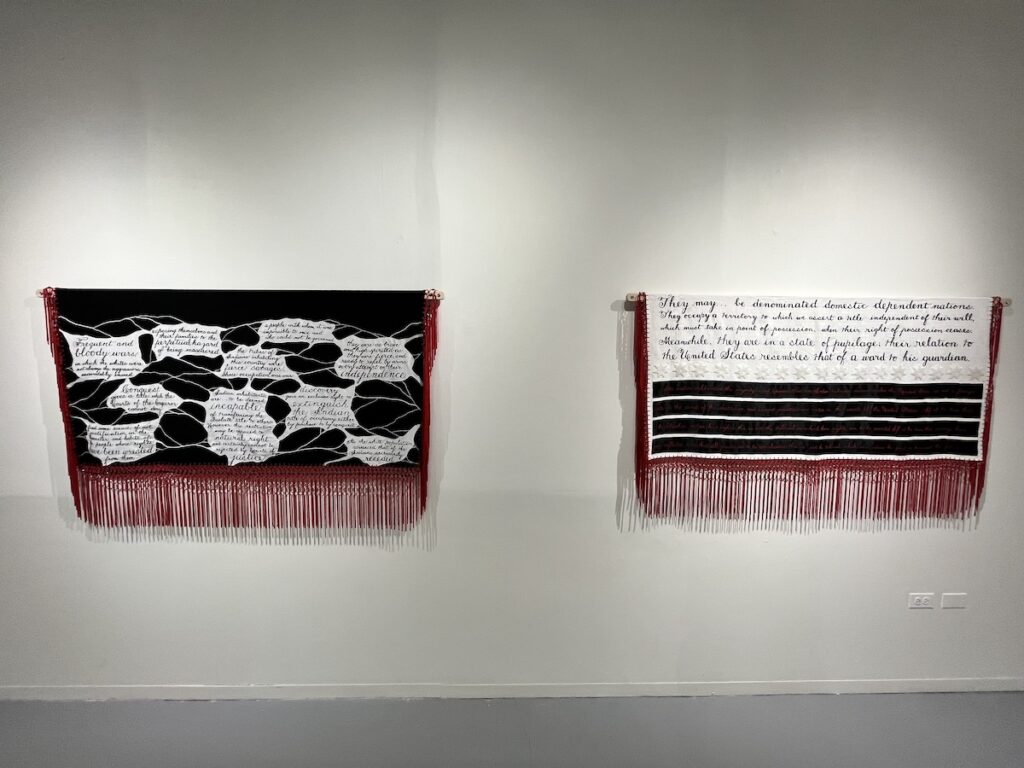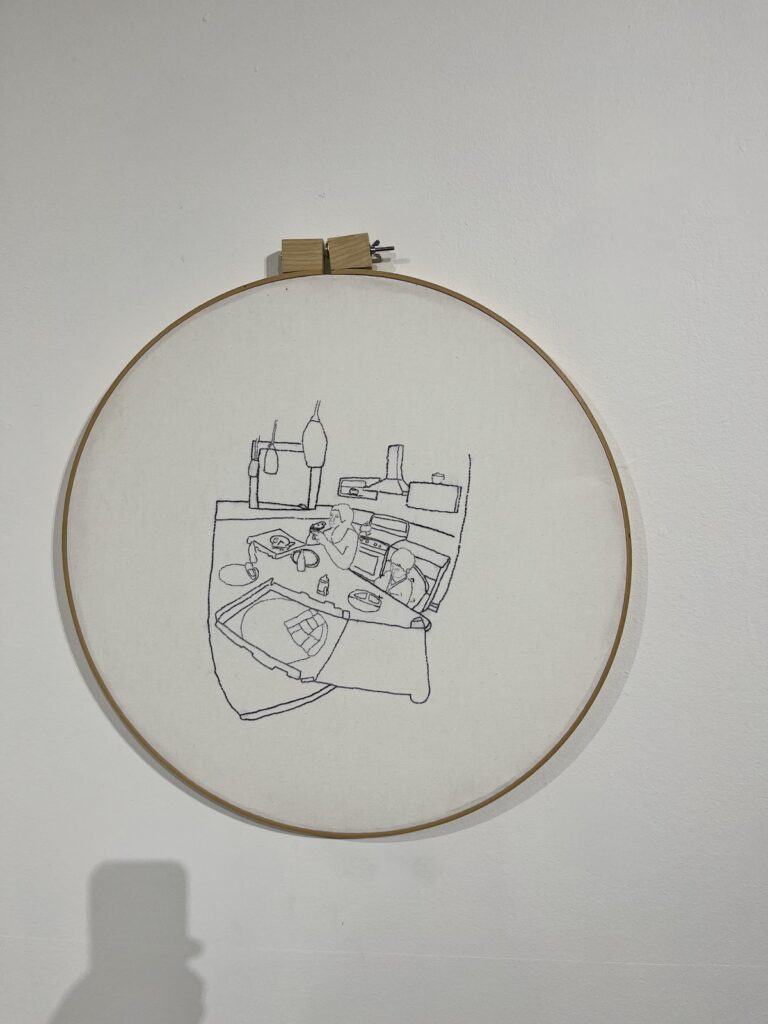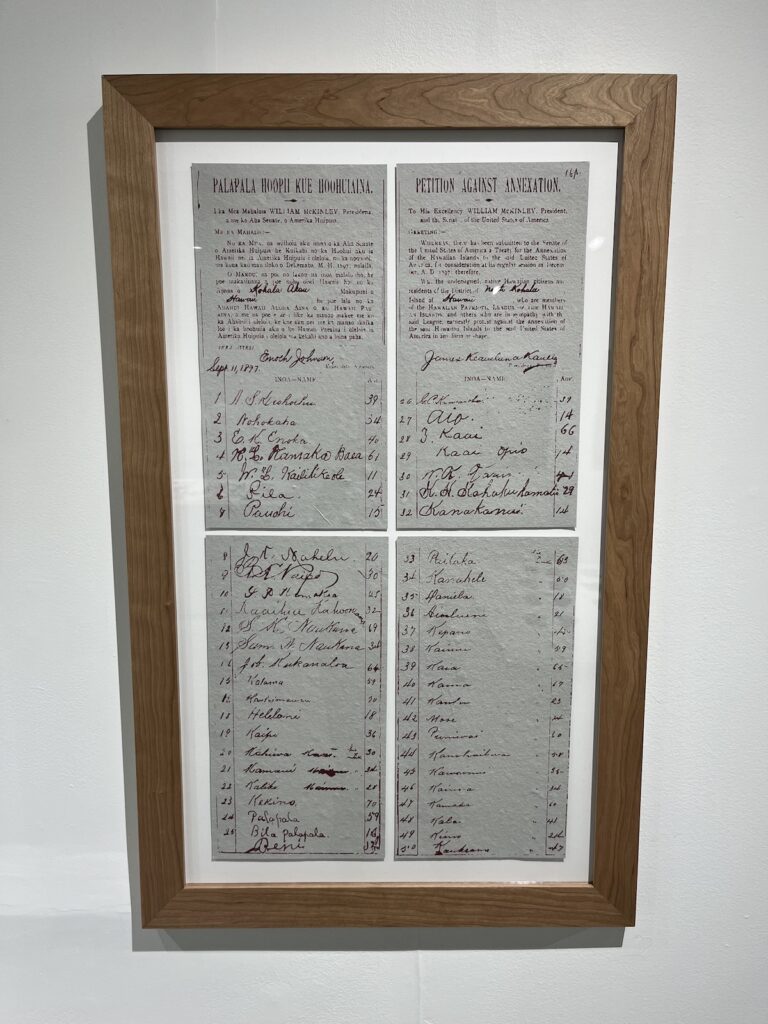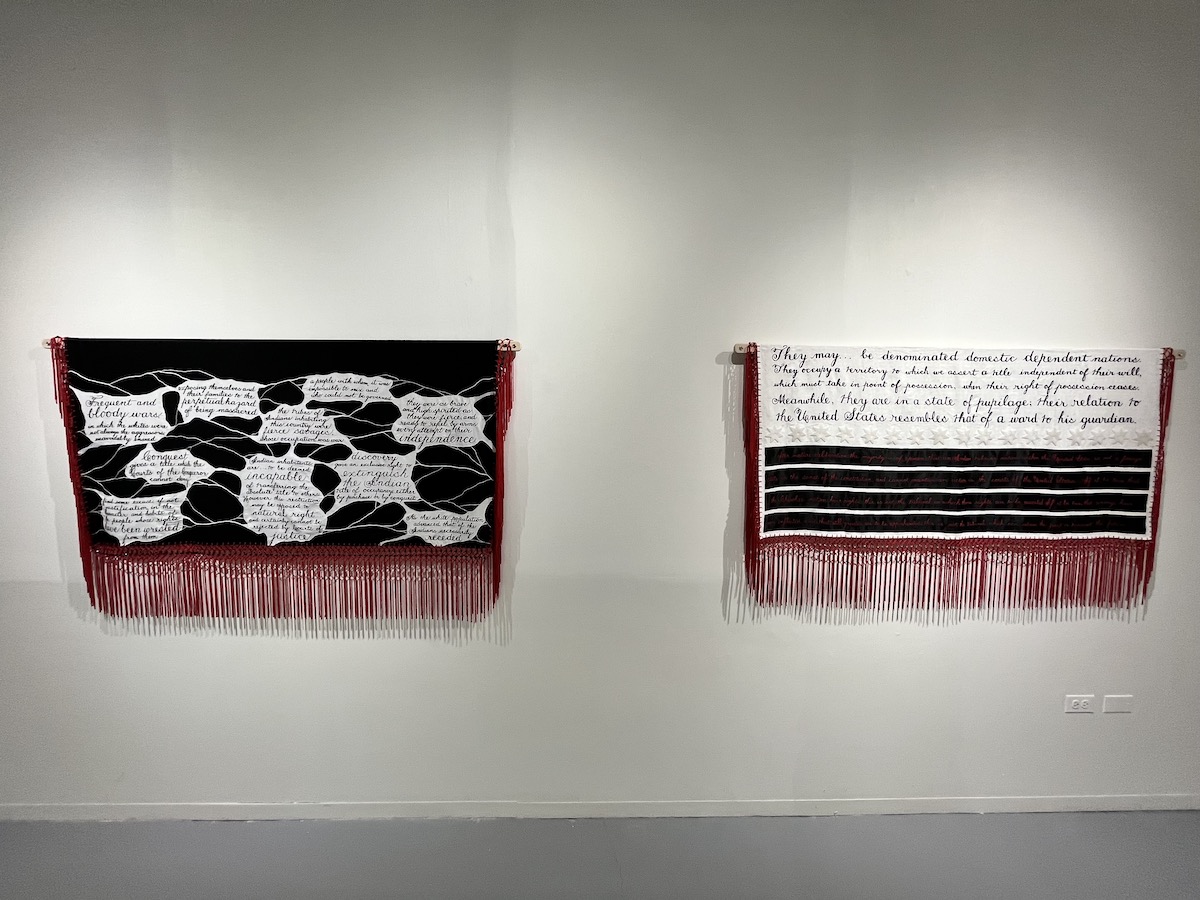When I first heard about “Surviving the Long Wars,” a series of art exhibitions and events that opened with a Veteran Art Triennial and Summit in March, I was both curious and skeptical. Having lived through the events of 9/11 and the structural Islamophobia that intensified in its wake, I’m jaded about American portrayals of war and Muslims, and how quickly they fall into a ’good Muslim’, ’bad Muslim’ dichotomy. I had never met anyone who was a veteran, let alone a veteran who was stationed in countries where my people came from.
But I trusted one of the co-organizers, Aaron Hughes, who put on an incredible interdisciplinary exhibit at the DePaul Art Museum in the fall that connected policing and militarism around the world, from Guantanamo Bay to Homan Square. So at the same time, I was drawn to attend, to see for myself what veteran art would evoke in me and whether it would feel like propaganda about the necessity of war or critically reflect on U.S. militarism.
I wasn’t disappointed. The triennial questioned the origins and impacts of war at home and abroad by bringing together art and artists. By putting a face to the individuals creating pieces intimately linked to their identity, the exhibits moved past reflection and invited artists and attendees to make space for all the hurt that came with bringing up the displacement and violence of war.
The summit took place March 16-19 and was put together with support from the National Endowment for the Humanities Veteran fellows and the three institutions the exhibit will be housed in: the Chicago Cultural Center, Hyde Park Arts Center, and the Newberry Museum. The summit featured performances, speeches, and hands-on arts activities hosted by the artists at all three locations.
The triennial was organized by a group of artists, organizers, and academics, mostly in Chicago, who are well-versed in work and writing around the global war on terror, policing, and the American Indian wars. In addition to Aaron Hughes, an Iraqi War veteran, curator, and anti-war activist, the triennial was organized by Ronak K. Kapadia, an associate professor of Gender and Women’s Studies at UIC; Therese Quinn, a professor in Museum Exhibition Studies; Joseph Lefthand, a veteran descended from the Cheyenne-Arapaho, Taos, and Zuni tribes; Amber Zora, veteran and artist from South Dakota; and Meranda Roberts, who recently co-curated the Aspaalooke Women and Warriors exhibit at the Field Museum.
In an interview with the Weekly, Ronak K. Kapadia talked about the internationalist work they were attempting to do by curating this project. “It is about putting Arab, Muslim and South Asian diasporic art in conversation with the long, centuries long history of native and black led rebellion against security orders in the US.”
This triennial was coming at the twenty year anniversary of the U.S. Invasion of Iraq. The advertising of the summit brought to light the two longest wars in U.S history: the American Indian Wars and the Global War on Terror. Those parallels were explored and made even more apparent throughout the weekend.
There was a palpable discomfort among the viewers of this art; forcing a reckoning about how to hold multiple truths about the war machine.
“It’s this particular group of people whose lives and communities have also been destroyed by the war machine, trying to have discussions about transformative conversations, healing, justice oriented conversations about the perpetrator, perpetration of violence and some mode of reconciliation or reckoning now,” said Kapadia.
The second day of the exhibit, at the Hyde Park Arts Center, featured programming that captured the essence of seventeen artists’ works while speaking to the themes being navigated during this summit. This space felt more casual than the Newberry from the day before and the Cultural Center would later. There was space to walk around, eat, and drink at your own pace; luxuries not afforded as readily in the more policed arts spaces downtown.
Mahwish Chisty, a visiting artist from Massachusetts who was raised in Pakistan, brought with her a series of pieces called “Drone Art”. Beautifying the ugliest parts of violence, she created collages in the outlines of the aerial drones used by the U.S. military in Pakistan, Afghanistan, and Yemen.
“The imagery on these machines is borrowing from the truck art, which is a native tradition of Pakistani truck art culture, where trucks are painted beautifully, elaborately in bright colors, and they have this iconography mixed with text and almost universal visual symbols that require no language in some way,” Chisty said during the group tour. “So I’m using that to show the deadliness of these machines.”
The exhibit wasn’t remarkable just because of the incredible art. As a fly on the wall in the room, one could expect to overhear the history of the U.S. Annexation of Native land, the Patriot Act, and policing in schools all while breaking bread and sipping a glass of wine. The threads of Chisty’s work, and how intimate and enmeshed surveillance is in the lives of drone victims, drew parallels to the work of June Carpenter, another exhibit artist.
Carpenter, repatriation specialist at the Field Museum, made visible the violence of the forced expulsion of Native Americans through the creation of hand embroidered shawls. The shawls contained the language of the six most egregious Supreme Court cases that set the precedent for violence against Native Americans. In one such case titled Cherokee Nation v. Georgia (1831), the Cherokee nation was deemed a “domestic dependent” nation, thus establishing the guardian-ward dynamic between Native nations and the American government.
This case, along with many others, set legal precedent for the ways the U.S. government received leeway to intervene in every aspect of Native life through forced separation of families and schooling. This was all portrayed in ornately embroidered woven shawls functioning almost as shrouds and expansive coverings for the abuse done by the American government. Shawls, symbols of beauty and warmth, even wealth, in Carpenters’ pieces are symbolic of all the covers that have allowed for American violence.
“These seventeen stars that are here are the beaded stars. These are seven pointed stars,” said Carpenter. “They are on the Cherokee seal. And that refers to these 17,000 people, 17,000 Cherokee, who are removed from Georgia after this case was decided.”

In a place like Chicago, where indigeneity is understood differently than in states like Oklahoma and South Dakota where reservations are visible and present spaces, it is not by coincidence that Native American art is less seen and visible.
While Native Americans were offered land in neighboring states, they were continuously pushed out of IL, making it one of sixteen states—and one of the furthest west—to not have any reservations. This present-day fact is a reminder of the violence that went into that expulsion, and makes the organizing of groups like Chi Nations Youth Council even more significant.
As Kapadia shared, the parallels between these wars lie in the way the war machine aims to disrupt intimate spaces; an idea that many of the artists at the triennial captured.
“War violence works by trying to destroy intimate intimacy, to also destroy our sense of our relationship to each other. This is a key idea in my book, which is that counterinsurgency operates by trying to destroy our sense of how we are connected to each other. And so actually, part of what our practice is doing is giving us a sense of solidarity and a sense of intimacy through difference.”
Intimacy was a thread that wove together all the pieces across the city, whether through the forms themselves, or the ways artists shared stories of personal and public lives being disrupted and destroyed by war. Saba Elahi, Chicago-based artist, built off the same drone imagery as Chisty and the use of fabric as Carpenter, but instead of capturing the drone, she captured what the drone would see. By embroidering living room scenes, and intimate domestic spaces, she showed what a drone operator might see prior to falling on and destroying a family.
Outside of the context, these pieces could be seen as images of families embroidered, tender moments over a box of pizza or sitting on the couch watching nightly news. Instead, in the context of drones, its violence is even more insidious. Taking it a step further, she uses the form and technique of machine embroidery in some of her pieces to shed light on the mechanization of so much of the warfare industry, whether it be in production or practice.

There was no shortage of mediums used in this exhibit, from performance and paintings to collages, weaving, embroidery, and printmaking. Ruth Kaneko, former combat medic, created paper out of her military uniforms to honor the 38,000 Hawaiians who signed a petition refusing annexation of Hawaii by the United States. The pieces were an homage to her Hawaiian heritage and resistance ancestry, and were poignant in the way they combined form and function to deliver power.
In a tearful explanation because of the recent death of her grandmother, Kaneko explained how she came to these pieces. Both by anonymizing, but showing the sheer volume of individuals impacted by U.S forced annexation, she makes clear what it means to be from a community victimized by the war machine and a veteran.
“In the early 1800s, there was 1.2 million Native Hawaiians in Hawaii. By the time that it was illegally annexed by the United States, there were 40,000 native Hawaiians left,” said Ruth. “So after Hawaii was illegally annexed by the United States in 1893, these women went across Hawaii and they collected 38,000 petition signatures, which basically is the entire population.”
The pieces shed light on the organizing work of Native Hawaiians at the time and the power and work it took to collect signatures from all the Hawaiians left after strategic policies of displacement and erasure by the U.S. military. The art was also deeply personal for Kaneko, as her family name was one of the 38,000 featured. Her pieces, as of many Native veterans, captured the tension that I walked into the exhibit anticipating; how could we hold space for veterans and war victims? The reality of which is that war entangles itself deep into communities and there is room for the veterans in this space to share just how insidiously that happens.

In the work of Chitra Ganesh, New York-based artist, on display at the Chicago Cultural Center, we begin to see a reminder of the effect on individual lives that the war on terror had. Her soft art form in the watercolor portraits ‘Seeing the Disappeared’ highlights individuals disappeared by the U.S government following 9/11 such as Fahd Gazy, a former detainee at Guantanamo Bay, or Sami Al- Arian, a Kuwaiti-born Palestinian activist held under house arrest from 2008 to 2014 under Patriot Act charges. Form and medium speak especially strongly to this, as instead of stiff sharp portraits with acrylic paint, she chose to do watercolor, softening the edges and the outlines of the portraits to honor lives lost and stolen.
Each space that housed the triennial added something different to the experience. The Hyde Park Art Center was a unique space for this exhibit, miles south from the rest of the installations, in the midst of work and studios of people like Robert Paige and Malika Jackson. The culminating moment at HPAC came with the performance by Hipólito Arriaga III, GOODW.Y.N., and Hussein Smko. On the cusp of Ramadan, on jummah nonetheless, I did not expect to hear the adhan echo through the gallery room at HPAC. But the start of the performance was just that, the creation of a solemn space. From there these three movement artists captured hurt and pain, joy and solidarity, all through the lyrical ways their bodies danced and fell.
In every way the still art (a word for non movement) could not capture emotion, the performance artists delivered, tying all the pieces together with a knot.
The artwork in the Cultural Center evoked a grandeur that the arts center could not, mirroring the art in a different way. Participants walked through the Tiffany dome and the marble engraved ceilings to make their way to the gallery. The lights on Michael Rakowitz portrait-esque collages of Iraq commemorated art stolen and destroyed in Iraq, leaving space for silences, but also grandeur to capture the remains from the Assyrian northwest palace of Kalhu. These wars not only had an impact on people and bodies, but art and the space it occupies.
The pieces throughout this exhibit echo in the trauma and hurt they convey.
“Very little attention [in mainstream media] to the ongoing nature of these wars, like these Indian wars never ended,” said Kapadia. “The War on Terror never ended, even if it was declared mission accomplished a million times. Yeah, the war permeates the lives of so many different kinds of peoples. And so I think part of Surviving the Long Wars was about attending to that not only afterlife, but the ongoing lived presence of war in lots of different kinds of people’s lives.”
The exhibit invites viewers to walk away with a global sense of solidarity, a commitment to the internationalist struggle for freedom. In the same way, it can evoke a sense of powerlessness; despite the beautiful community created, these wars still go on.
As Dunya Mikhail said in one of the poems she read on the second day of the exhibit:
Their songs will not save us,
although, in the chilliest times,
they keep us warm,
and when we need to touch the soul
to know it’s not dead
their songs
give us that touch.
Surviving the Long Wars exhibits will remain open for a few months. Residues and Rebellions at Newberry Library until May 26; Unlikely Entanglements at the Hyde Park Art Center until July 9; Reckon and Reimagine at the Chicago Cultural Center until June 4.
Isra is an advocate at the Children and Family Justice Center and reporter with the Invisible Institute. In her free time she is reading, writing, and contemplating our role in the movement and how we can work to build a better world.

